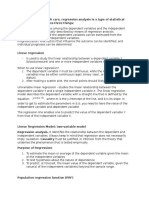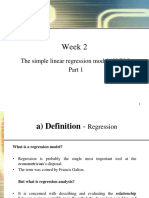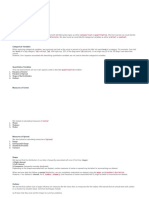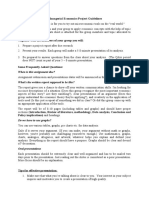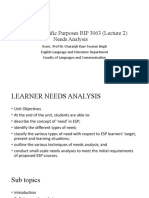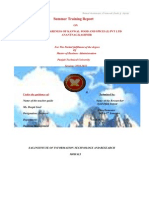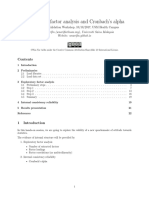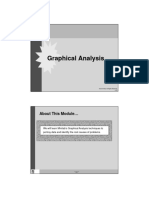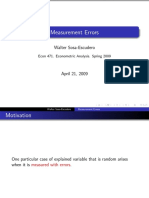0% found this document useful (0 votes)
50 views11 pagesLecture 6 Topic 5 Basic Regression
Linear regression analysis estimates the relationship between a dependent variable and one or more independent variables. It models this relationship as the population regression function, which contains a deterministic component (the regression line) and a stochastic error term. The sample regression function uses sample data to estimate the unknown parameters of the population regression function via ordinary least squares (OLS) estimation, which minimizes the sum of the squared residuals. OLS provides estimators of the slope and intercept coefficients that define the sample regression line.
Uploaded by
kgahlisoCopyright
© © All Rights Reserved
We take content rights seriously. If you suspect this is your content, claim it here.
Available Formats
Download as PPTX, PDF, TXT or read online on Scribd
0% found this document useful (0 votes)
50 views11 pagesLecture 6 Topic 5 Basic Regression
Linear regression analysis estimates the relationship between a dependent variable and one or more independent variables. It models this relationship as the population regression function, which contains a deterministic component (the regression line) and a stochastic error term. The sample regression function uses sample data to estimate the unknown parameters of the population regression function via ordinary least squares (OLS) estimation, which minimizes the sum of the squared residuals. OLS provides estimators of the slope and intercept coefficients that define the sample regression line.
Uploaded by
kgahlisoCopyright
© © All Rights Reserved
We take content rights seriously. If you suspect this is your content, claim it here.
Available Formats
Download as PPTX, PDF, TXT or read online on Scribd
/ 11



























